8. How do you handle: EDUCATION and FULFILLMENT?
Schooling
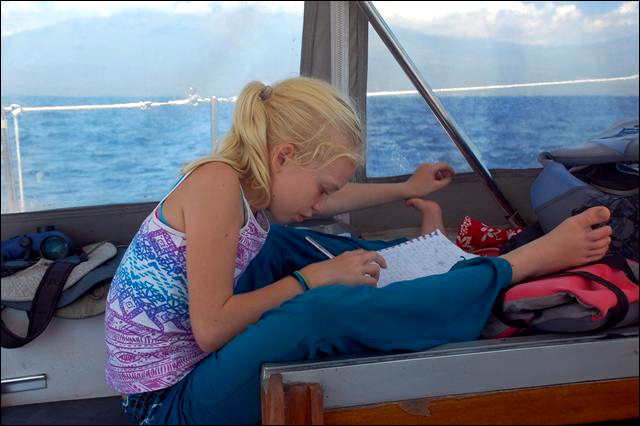 |
Mairen journals on a passage - 2013
She gets into flow for learning when she is in the most awkward positions |
Our approach to learning on board has evolved over time. Fundamentally, it is led by the interests of the learner. I've written a lot about boatschooling on our blog.
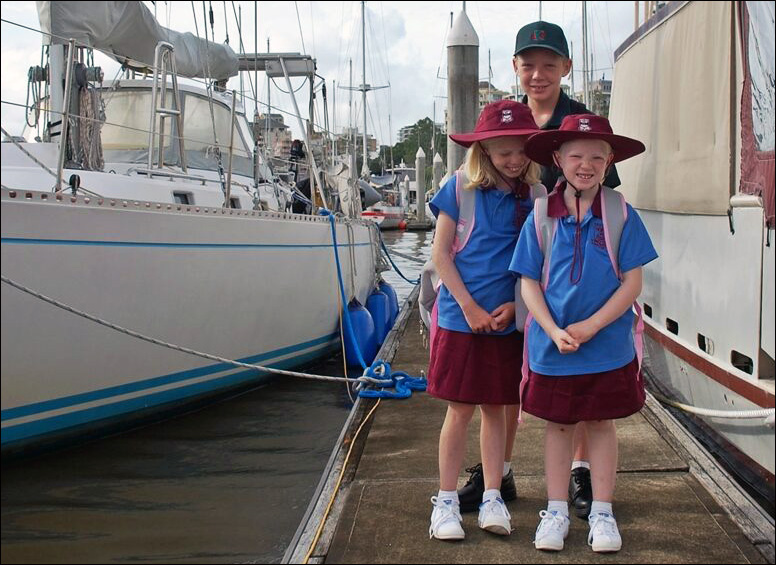 |
6 months of “normal” school in Australia - 2012 |
In general, as the kids have gotten older, we've added more structure- but we don't use a packaged curriculum, and tend to be much more freestyle in planning and sourcing materials than most cruising families we know.
As the kids have aged, we've also moved towards more digital content, with the advent of great digital (but offline-friendly) tools like Khan Academy Lite, ebooks, wikipedia (the offline version using Kiwix) and educational videos (like Crash Course or Horrible Histories) to support printed materials and the world around us.
Friendships and social interactions
• As the kids themselves mentioned above, being around other kids is important; peer company is increasingly valued as teens. It is not difficult to have the company of other kids, however, even on less common routes.
This year, there are 15 kids crossing the Indian Ocean- a big stretch of water, but with major ports of call; we've shared passages, met up in different ports, and had great camaraderie in the kid fleet.
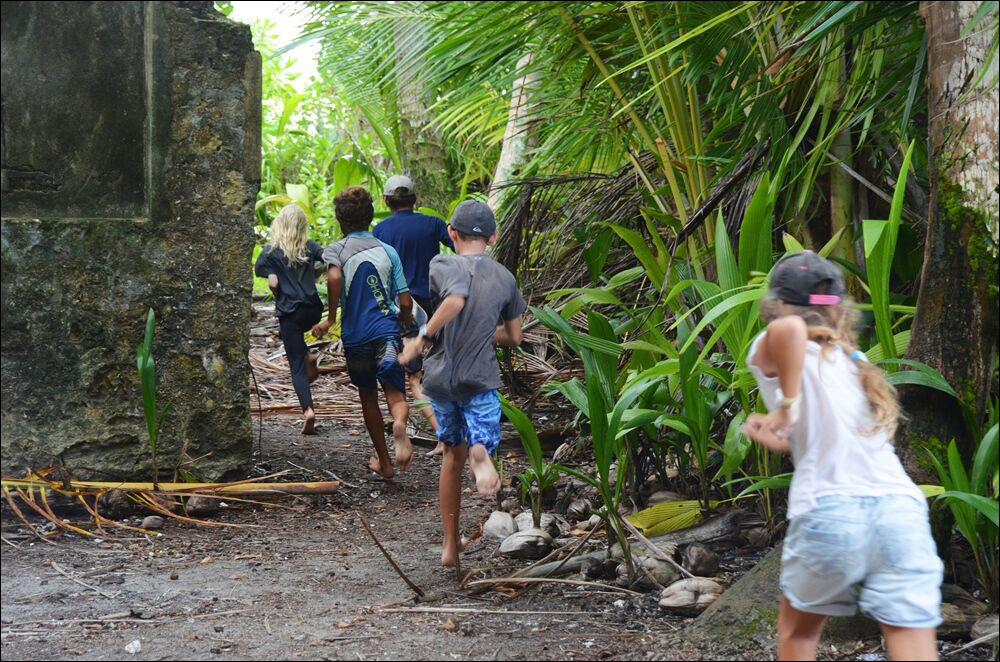 |
Charging off on a scavenger hunt in Chagos |
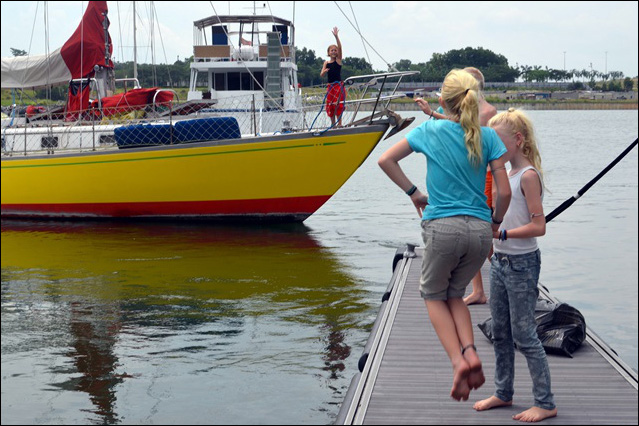 |
MOMO change their plans to head to South Africa
and come into Puteri Harbour, Malaysia |
• We have also gone for months at a time without other cruisers or kid boats nearby, and after a while, it gets old. It helps us that our kids have each other for companionship.
• Ultimately, being around other kid boats is a choice.
If you dogmatically stick with the route you dreamed about while reading Slocum, you are more likely to find yourself alone.
If you put a little effort into meeting up with other kid boats and allow flexibility in your plans, it's not difficult to find the company of other cruising families.
Keeping the kids entertained
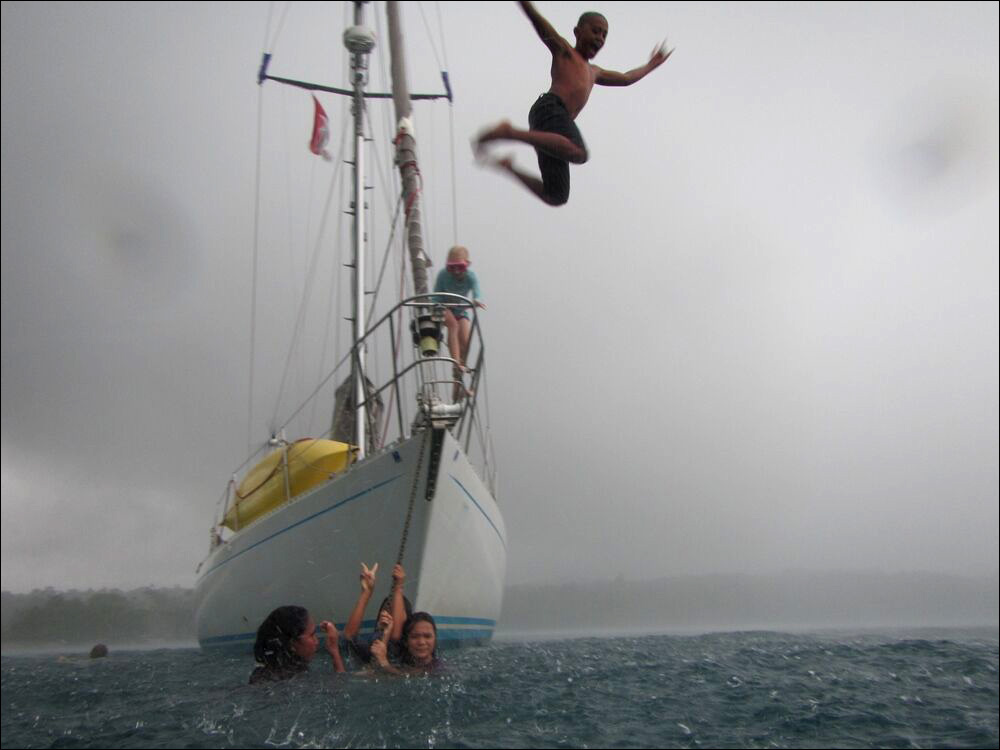 |
Squally day swimming with friends in the Spice Islands - 2013 |
• The perceived burden of “keeping kids entertained” is a land-based concept that doesn't really apply to our context. We had to think about this a bit when they were younger, but at their current ages, entertainment is in their hands.
One of the gifts of cruising is that life slows down, and kids figure out what to do to instead of needing to “be entertained” by a revolving series of distractions.
• That said, things that are most used for entertainment on Totem are the environment around us, a deep stash of books, a locker full of games, and a cache of movies for evening fun.
Personal space aboard
• Our sixteen year old son has his own cabin, just forward of the saloon; it's pretty small, but has two bunks. We removed the door for egress safety reasons when he was 9, and are now looking at adding a curtain to provide him with additional privacy.
• Our daughters, age eleven and thirteen, share the forepeak. The bunk is roughly queen size, and they each have similar sets of cubbies on their respective port and starboard halves for storing clothes and special things. They share a single long bookshelf and a bin for treasures.
• Jamie and I have a master suite in the aft end of the boat. It's nice to have a little separation from the kids' zone forward of the mast, and to have two different heads!
Family back home and their concerns
My parents seemed to be in denial about our plans during the years leading up to our departure. As departure neared, they weren't too happy about our decision to go, but didn't get in our way or reject our choice outright.
We're just starting our eighth year as cruisers, so at this point, they've had time to appreciate that the kids are thriving in this way of life and the path we've chosen brings our family tremendous rewards.
It's hard for us not to see our relatives more often, but that's a reality of our finances…and we've been lucky to have some really special visitors from afar.
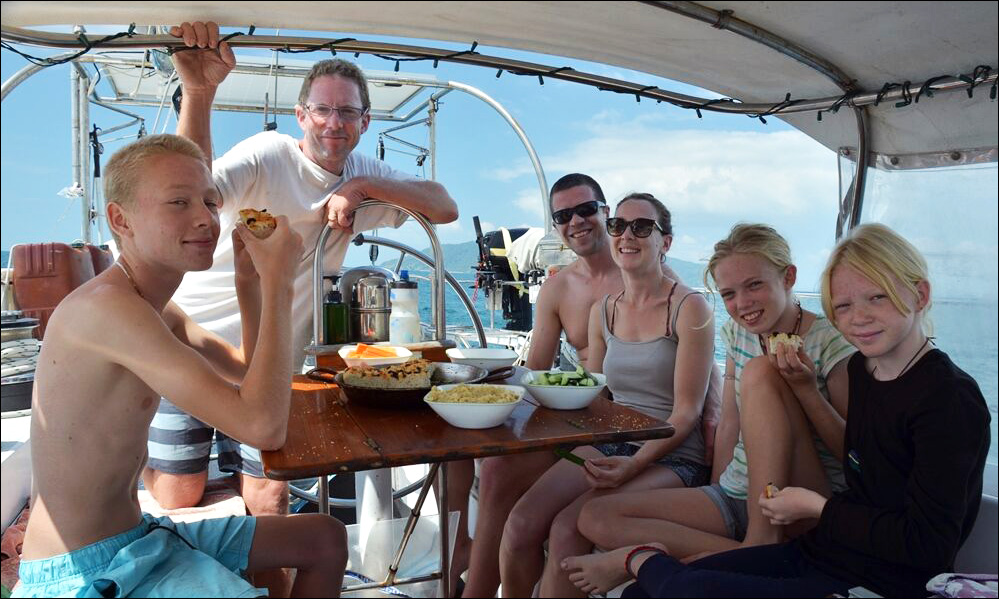 |
Rare and wonderful visit from family- Behan's cousin |
|